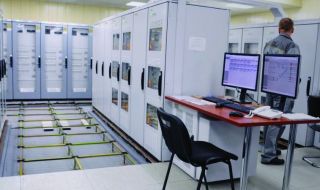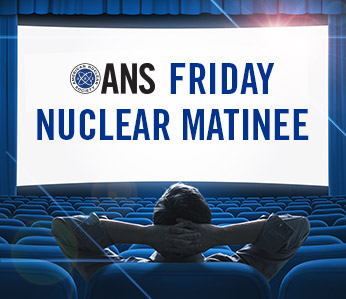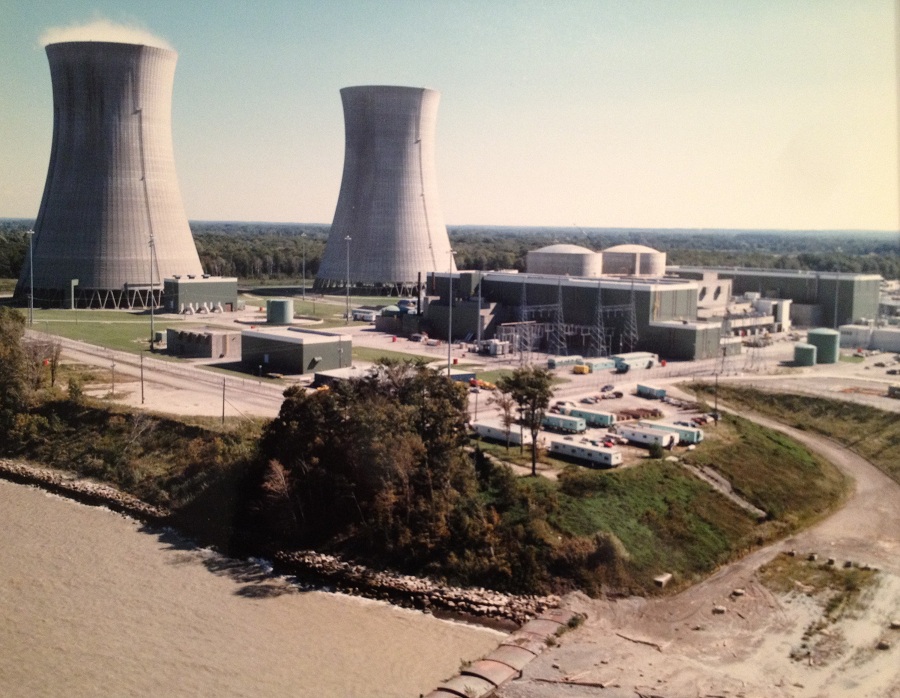A Busy Couple of Weeks in December
There have been a number of significant and/or interesting developments in the nuclear energy field recently, with large light-water reactor business taking the fore. Here are some highlights:
The ANS Nuclear Cafe is a blog owned and edited by the American Nuclear Society. Information contained on the ANS Nuclear Cafe has been provided by numerous sources. Therefore, the American Nuclear Society assumes no responsibility or liability for the accuracy of information contained herein. DISCLAIMER: The views expressed in posted articles do not necessarily reflect the views of the American Nuclear Society. The views expressed here are those of the individual authors. ANS takes no ownership of their views. The American Nuclear Society assumes no responsibility or liability for any use or operation of any methods, products, instructions, or ideas contained on this site.

A message from Curtiss-Wright
A Clean Energy Powerhouse: The Digital I&C Systems Modernizing Nuclear
There have been a number of significant and/or interesting developments in the nuclear energy field recently, with large light-water reactor business taking the fore. Here are some highlights:

Shippingport Atomic Power Station as pictured in original press package; photo PR-19109
•Shippingport started up 60 years ago today. On December 2, 1957, the reactor at the Shippingport Atomic Power Station, which was America's first, full-scale nuclear power plant, was made critical for the very first time. This event occurred fifteen years to the day after the historic first startup of the first nuclear reactor ever - the CP-1 pile near Chicago. Many important people, including Admiral Rickover, were present at the startup.
"Some recent work by E. Fermi and L. Szilard, which has been communicated to me in manuscript, leads me to expect that the element Uranium may be turned into a new and important source of energy in the immediate future." - Albert Einstein, letter to President Franklin D. Roosevelt, August 2, 1939
A short while back in early November, I decided to conduct a poll on Twitter - that oft-maligned, mostly misunderstood, microblogging site on which instantaneous outreach is seriously tempered by a roughly 19-minute-post-visibility lifetime. Even with the limitations, I thought my first-ever use of the polling tool would produce a pretty predictable result. I was off the mark.
Loyalty is inconvenient.

When you hear the friendly voice of Joe Washington, you know that it's time for another in the excellent series of "Vogtle Timeline" videos presented by Georgia Power. This most recent update covers some important ground - namely, the change in construction arrangements following Westinghouse's bankruptcy and how the project goes on from that point. Not only is physical progress at the plant site displayed, but community outreach and impact are also shown in this well produced video.
The story of America's first successful marine nuclear power plant as used on the submarine USS Nautilus is well known. What is less known today is the real story behind the competing, and in the end losing, design - an "advanced" design using sodium cooling that in some quarters was first thought to be the better choice.
A packed room was on hand for this morning's panel session on Used Nuclear Fuel Management, and following the interesting presentations by several speakers the crowd took part in an energetic and, at some times, lively discussion on where we are as a nation and as an industry on the issues of storage of used fuel and the potential for creation of storage or even, possibly, a repository. Given the present political environment, there's motion on the latter, which led to some of the liveliness of the discussion. We'll give just some of the remarks made by presenters below.
The keynote speech of this morning's Opening Plenary was delivered to a large crowd by newly-installed Deputy Secretary of Energy Dan Brouillette, who followed ANS President Bob Coward's positive and hopeful, if wary, tone on the platform.
"There's no one I'd rather go into battle with," said ANS President Bob Coward to a packed Opening Plenary audience this morning, "than nuclear professionals," in reference to the stated purpose of ANS in advancing nuclear technologies. Coward's very first remarks set the tone for a speech that was remarkably hopeful and bright given the recent blows that nuclear energy has suffered here in the United States.
What is an ideal energy source for electricity production? Students in my class say the ideal source must be plentiful, sustainable, inexpensive, reliable, safe, and produced right here in the United States thereby providing jobs.
The recent destruction of Puerto Rico's electric power infrastructure has been on the front page of every important news source at one time or another since the event near the end of September. Recent reports show that perhaps as little as 10 to 15 percent of the island has electric power available now.
(Part of a special series of videos filmed at the 2017 ANS Annual Meeting. By Will Davis.)
The Young Professionals Congress (YPC), the only joint American Nuclear Society (ANS) and North American Young Generation in Nuclear (NAYGN) meeting held anywhere, is a once every two years event held in Washington D.C. in conjunction with the ANS Winter Meeting. For both of us, 2015 was our first opportunity to attend a YPC and after first hearing about it, we both immediately recognized the value and importance of the meeting. As attendees and planners for 2015 and 2017, we are eager to share some of the great content associated with YPC 2017 and encourage you to attend. Remember, while YPC is a young professionals-run event, geared toward those early in their careers, there is plenty of content for the established professional to gain from attending.
As the month of October does its seasonal dance across the warm fall color spectrum, there's a bright cool color prominent on television shows and football fields: pink. October's pink represents breast cancer awareness month.
By Jim Walther, Executive Director of the National Museum of Nuclear Science & History; Chair of the Nuclear Science Week International Steering Committee

Perry Nuclear Plant in Ohio. Nuclear plants create no emissions of their own; the cooling towers emit only water vapor. Press photo in Will Davis collection.
One of the things that's important to consider this week - National Clean Energy Week - is whether or not energy sources we depend upon are actually clean. While we think of solar and wind energy as being pretty clean, we are also reminded that they are not reliable, and they do experience periods of time when they just don't work. What we use to fill in that power gap is from sources we can control, independent of weather or time of day. These are sources we call "dispatchable" generating sources, because we can dispatch them and expect they'll answer the call to provide power.
Fourth in a series of videos recorded at the ANS Annual Meeting, San Francisco, June 2017
INL Neutron Radiography Reactor re-irradiates fuel to enable safety analyses

Florida Power and Light's St. Lucie nuclear plant; photo courtesy FPL
Hurricane Irma shocked the country this week with images of wind and water that haven't been seen in some time along the hurricane-wary coastlines of the United States. Although people in those regions always have preparation for these storms somewhere in their minds, the two Florida Power & Light (FPL) nuclear plants-both of which powered through the hurricane-had both a background of design and preparedness to stand on as well as some recent, last-minute preparations.